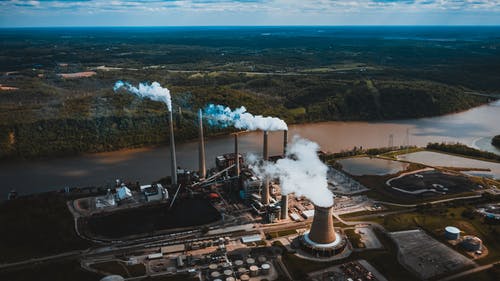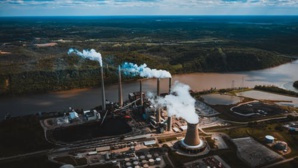Dailycsr.com – 30 March 2021 – Inspired by the “past success” of the industry in “fighting smog”, the chief technical officer at Cummins aspires to make the “global power leader” “carbon neutral by 2050”.
In the words of Jim Fier:
“What gives me confidence that we’re actually going to be able to get there is looking in the rear-view mirror and seeing the innovation that has occurred over the last 30 years to get us to where we’re at today”.
Nearly three decades ago, the manufacturer of diesel engines set off on a “remarkable success story”. And worked to meet “increasingly tougher standards set by government regulators” as the industry slowly cut down on “oxides of nitrogen (NOx) and particulate matter (PM) emissions”, both the elements being major “contributor to smog”. At present, we see a 90% reduction in “NOx emissions” in the industry when compared to “the mid-1980s and early 1990s” figures while PM came down by over 95%.
Cummins Inc added:
“It wasn’t easy. There were plenty of misses along the way. But eventually ultra-low sulfur fuels, increasingly sophisticated emission control devices and other innovations enabled today’s diesel engines to reach near-zero emission levels for NOx and PM”.
“PLANET 2050” is the “environmental sustainability strategy” of Cummins which includes the goal of achieving “carbon neutrality by 2050”. However, the company is aware of the fact that achieving this feat all alone won’t an easy task. Therefore, there needs to technology development, infrastructure establishment to provide support while customers will also need to “adopt and embrace the technology”.
Furthermore Cummins informed that the company is “developing battery electric and fuel cell electric technology to prepare for the transition to a carbon neutral future. Fier said the company is also working to improve its diesel engines, exploring everything from alternate fuels to technology advances to reduce carbon. And natural gas engines as well as hybrid engines, combining electric and diesel, could serve as an important bridge to the future as the infrastructure develops to support low-carbon technologies”.
While Fier added:
“It is so much fun trying to get in and solve some of these problems and know you’re helping people doing it…There are over 11,000 engineers just waiting to get at these problems. That’s what we do as engineers. We solve problems and that’s what’s exciting for us.”
References:
3blmedia.com
In the words of Jim Fier:
“What gives me confidence that we’re actually going to be able to get there is looking in the rear-view mirror and seeing the innovation that has occurred over the last 30 years to get us to where we’re at today”.
Nearly three decades ago, the manufacturer of diesel engines set off on a “remarkable success story”. And worked to meet “increasingly tougher standards set by government regulators” as the industry slowly cut down on “oxides of nitrogen (NOx) and particulate matter (PM) emissions”, both the elements being major “contributor to smog”. At present, we see a 90% reduction in “NOx emissions” in the industry when compared to “the mid-1980s and early 1990s” figures while PM came down by over 95%.
Cummins Inc added:
“It wasn’t easy. There were plenty of misses along the way. But eventually ultra-low sulfur fuels, increasingly sophisticated emission control devices and other innovations enabled today’s diesel engines to reach near-zero emission levels for NOx and PM”.
“PLANET 2050” is the “environmental sustainability strategy” of Cummins which includes the goal of achieving “carbon neutrality by 2050”. However, the company is aware of the fact that achieving this feat all alone won’t an easy task. Therefore, there needs to technology development, infrastructure establishment to provide support while customers will also need to “adopt and embrace the technology”.
Furthermore Cummins informed that the company is “developing battery electric and fuel cell electric technology to prepare for the transition to a carbon neutral future. Fier said the company is also working to improve its diesel engines, exploring everything from alternate fuels to technology advances to reduce carbon. And natural gas engines as well as hybrid engines, combining electric and diesel, could serve as an important bridge to the future as the infrastructure develops to support low-carbon technologies”.
While Fier added:
“It is so much fun trying to get in and solve some of these problems and know you’re helping people doing it…There are over 11,000 engineers just waiting to get at these problems. That’s what we do as engineers. We solve problems and that’s what’s exciting for us.”
References:
3blmedia.com


 Past Success Becomes Cummins Inspiration Towards 2050 Carbon Neutrality Goal
Past Success Becomes Cummins Inspiration Towards 2050 Carbon Neutrality Goal





 Companies
Companies